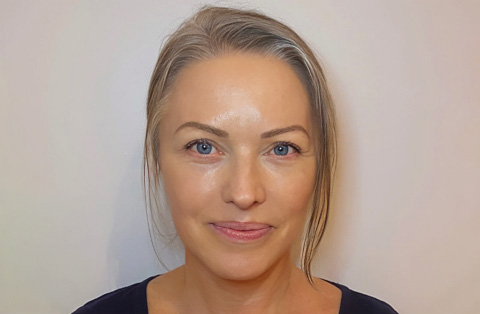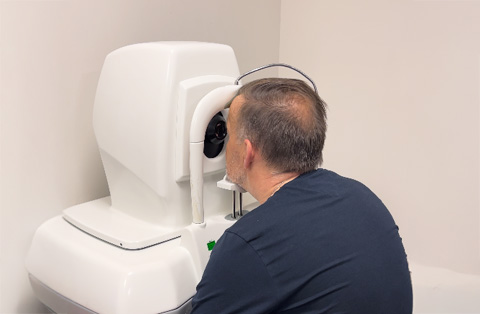As we age, the quest for preserving a youthful appearance intensifies, but not everyone is ready to commit to the invasiveness of surgical facelifts. High-Intensity Focused Ultrasound (HIFU), a non-surgical treatment poised at the forefront of cosmetic innovation. HIFU promises to tighten skin and reduce fine lines using ultrasound energy, appealing to those seeking minimal downtime and less drastic measures.
However, while HIFU can be effective in addressing mild aging signs in younger individuals, its limitations become apparent with older age and more pronounced wrinkles.
In this article, we explore the capabilities and boundaries of HIFU, offering a realistic perspective on what ultrasound technology can achieve in facial rejuvenation compared to traditional surgical options. Whether you're considering HIFU or just curious about its effectiveness, understanding its potential will guide you in making an informed decision about managing aging signs.
What is HIFU Facial?
HIFU facial, or High-Intensity Focused Ultrasound, is a non-surgical cosmetic treatment for skin tightening and rejuvenation. This technology uses focused ultrasound energy to target the layers of skin just below the surface. The energy heats the tissue, stimulating the production of collagen, which results in firmer, tighter skin.
HIFU is popular for its ability to lift and tighten facial areas such as the jawline, chin, and brow without downtime. Although primarily beneficial for mild to moderate skin laxity, it is not as effective for deep wrinkles or significantly sagging skin, which are typically addressed with surgical facelifts.
Understanding High-Intensity Focused Ultrasound (HIFU) Technology
High-Intensity Focused Ultrasound (HIFU) technology harnesses the power of ultrasound energy to non-invasively target deep layers of skin and underlying tissue.
The technology focuses ultrasound waves to a pinpoint, heating the targeted tissue at precise depths. This heat triggers natural collagen production, leading to tighter and firmer skin over time.
The Mechanics Behind HIFU Facial and Skin Tightening
High-Intensity Focused Ultrasound (HIFU) facial and skin tightening works by directing concentrated ultrasound energy to specific depths of the skin. This process heats the target tissues to temperatures that stimulate collagen production, crucial for skin firmness and elasticity.
The ultrasound energy bypasses the surface, affecting only the deeper layers. It targets up to three different depths: the dermis, subdermal tissue, and the SMAS layer, which is the area surgeons manipulate during traditional facelifts. By initiating the body's natural healing response, HIFU encourages gradual tissue remodelling and collagen renewal, leading to tighter, lifted skin over the following months.
Comparing HIFU Non-Surgical Facelift to Traditional Surgical Facelifts
High-Intensity Focused Ultrasound (HIFU) offers a non-surgical alternative to traditional surgical facelifts, targeting the skin's deep layers to stimulate collagen without incisions.
Traditional facelifts involve surgery to remove excess skin and tighten underlying tissues for more dramatic and longer-lasting results. HIFU is less invasive, requires no recovery time, and is best for mild to moderate skin laxity. However, it cannot achieve the same level of correction as surgical methods in cases of significant aging signs.
Here's a detailed comparison chart for HIFU and different types of surgical facelifts:
Treatment Type | Technique | Invasiveness | Recovery Time | Effectiveness | Best For |
HIFU | Ultrasound energy targets deep skin layers | Non-invasive | No downtime | Mild improvement | Mild skin laxity |
Adjusts deeper facial muscles and fat | Invasive | 2-4 weeks | Significant, long-lasting | Severe sagging, deeper facial layers | |
Targets broader areas of the cheek and neck | Invasive | 2-4 weeks | Comprehensive and lasting | Extensive aging, mid-face and neck | |
Smaller incisions, less extensive | Invasive | 1-2 weeks | Moderate, focused areas | Early signs of aging, minimal sagging |
Each treatment has its unique advantages and is suitable for different aging concerns and patient preferences.
Can HIFU be an Alternative to Facelift?
HIFU cannot fully replace a traditional facelift.
While HIFU provides a non-surgical option to tighten and lift the skin by stimulating collagen production, its results are subtler and less dramatic. It is effective primarily for mild to moderate skin laxity and does not address severe sagging, deep wrinkles, or significant volume loss as effectively as a surgical facelift.
For those with advanced signs of aging, HIFU does not achieve the same comprehensive and long-lasting results that surgical methods offer. Therefore, while HIFU can be a good option for early signs of aging, it is not a substitute for a facelift in more severe cases.
Benefits of High-Intensity Focused Ultrasound (HIFU)
HIFU FAcial offers several benefits as a cosmetic treatment. It safely tightens and lifts skin for mild wrinkles. HIFU treatments are quick, typically lasting about 30 to 90 minutes, and require no downtime, allowing patients to return to daily activities immediately.
Non-invasive with no incisions
No downtime required
Quick treatment sessions
Stimulates natural collagen production
Gradual, natural-looking results
Side Effects and Safety of HIFU Treatments
HIFU treatments are generally safe if performed by a trained and qualified professional.
The FDA approved HIFU for brow lifts in 2009 and later for improving wrinkles on the décolletage in 2014. Clinical trials have demonstrated its efficacy in facial lifting and wrinkle reduction, showing results within a few months.
Side effects are minimal, typically including temporary redness, swelling, and mild discomfort.
However, HIFU may not be as effective for those with severe skin sagging. As it continues to be explored for facial rejuvenation and body contouring, further research is needed to fully establish its suitability for various skin types and conditions.
Potential Side Effects of HIFU
Redness and irritation in the treated area
Swelling and tenderness
Tingling or numbness
Bruising or minor discomfort
Temporary nerve inflammation
Mild pain or sensitivity during the procedure
Rare instances of blistering or minor burns
Temporary muscle weakness in the treated area
How Much Does a HIFU Facelift Cost?
HIFU facelift varies widely depending on the geographic location, the provider's expertise, and the extent of the treatment area. On average, HIFU treatments can range from $1,000 to $4,500 per session. Factors like the number of sessions needed and the specific areas of the face being treated also influence the total cost.
Typically, a single session targets specific facial areas and provides noticeable results. It's important for patients to consult with qualified providers to get a detailed estimate tailored to their specific facial rejuvenation needs.
Comparing the Cost of HIFU to Facelift Surgeries
Comparing the cost of HIFU to traditional facelift surgeries reveals significant differences. HIFU is generally less expensive, ranging between $1,000 and $4,500 per session, whereas surgical facelifts can cost anywhere from $7,000 to $15,000 depending on the complexity and location. The lower price of HIFU reflects its non-invasive nature and the absence of surgical fees, anesthesia, and extended recovery times. However, multiple HIFU sessions may be needed for optimal results, which can increase the overall cost, though it still typically remains below that of surgical alternatives.
Here's a comparison chart of the average price ranges for HIFU Facelift and various surgical facelift procedures in different countries, presented in Euros:
Treatment Type | Turkey | UK | France | Germany | USA | Italy | Spain |
HIFU Facelift | €900 | €1,200 | €1,300 | €1,500 | €4,000 | €1,400 | €1,100 |
Deep Plane Facelift | €3,000 | €11,000 | €12,000 | €10,000 | €12,500 | €11,500 | €9,000 |
Extended High SMAS Facelift | €3,500 | €12,000 | €13,000 | €11,000 | €14,000 | €12,000 | €10,000 |
Mini Facelift | €2,500 | €6,000 | €7,000 | €6,500 | €8,000 | €7,500 | €6,000 |
These values are approximate and can vary based on the specific clinic and the details of the procedure. Always consult with a provider for accurate cost information.
Who Should Consider a HIFU Facelift? Understanding Treatment Areas and Ideal Candidates
Individuals considering a HIFU facelift typically seek mild to moderate improvements in skin tightness and appearance without undergoing surgery. Ideal candidates are those experiencing early signs of aging, such as slight skin laxity, fine lines, and wrinkles, particularly around the jawline, cheeks, and brow area.
HIFU is also suitable for people looking for preventative treatment to slow the aging process skin-wise. It works best for those in their thirties to fifties. Those with severe skin sagging or deep wrinkles may not see optimal results and might need to consider more invasive procedures. Always consult with a skincare professional to assess suitability for HIFU treatment.
Best Candidates for HIFU Non-Surgical Facelifts
Individuals in their 30s to 50s: Ideal for those experiencing the early signs of aging.
People with mild to moderate skin laxity: Slight sagging or loose skin that does not yet require surgical intervention.
Those looking to reduce fine lines and wrinkles: Particularly around the brow, jawline, and neckline.
Patients seeking minimal downtime: Suitable for individuals who cannot take extended time off for recovery.
Those preferring non-invasive treatments: Ideal for individuals wary of the risks associated with surgery.
Patients interested in preventative care: Those aiming to maintain skin firmness and delay the aging process.
People with realistic expectations: Understanding that results will be more subtle compared to surgical facelifts.
Individuals with good skin condition: Free of serious skin diseases, infections, or severe acne in the treatment area.
Key Treatment Areas for HIFU: Face and Neck Lifting and Tightening
HIFU effectively targets key areas for non-surgical face and neck lifting and tightening. The primary treatment areas include the jawline, under the chin, the cheek area, and the forehead for brow lifting. It also significantly benefits the neck and décolletage, improving skin texture and firmness.
Ideal candidates for HIFU are those with mild to moderate skin laxity who are not yet in need of surgical intervention but seek noticeable enhancements. People in their 30s to early 50s often see the best results, as HIFU helps in promoting collagen production, crucial for maintaining skin elasticity and youthfulness.
When To Expect Visible Results from HIFU and Longevity of Treatment
Visible results from HIFU treatments typically emerge gradually. Most patients begin to see improvements within a few weeks, with the most significant changes appearing over two to three months as collagen production increases. The full effects of the treatment often unfold over six months, providing a natural lift and tightening of the skin.
The longevity of HIFU results varies by individual but generally lasts between one and two years. Factors such as age, skin condition, and lifestyle can influence the duration of the effects. To maintain results, some patients may opt for annual touch-up treatments, depending on their skin's response and aging process.
Frequently Asked Questions
Is HIFU effective for face lift?
Yes, HIFU is effective for a facelift. It targets deeper skin layers to stimulate collagen production, resulting in a lifted and tightened appearance. Best suited for mild skin laxity. But patients must aware of HIFU facelift cannot be effective on severe aging situations on face.
How long does HIFU face lift last?
The results of a HIFU facelift typically last between one and two years. Factors like individual skin condition and lifestyle can affect longevity. Many choose to have annual touch-up treatments to maintain their results.
What is the downside of HIFU?
The main downside of HIFU is that it may not effectively treat severe skin sagging or deep wrinkles. Results can vary significantly between individuals, and multiple sessions might be necessary to achieve desired outcomes. Some patients experience temporary discomfort, redness, or swelling. Additionally, HIFU results are subtler and less dramatic compared to surgical facelifts, and its effectiveness diminishes with more advanced signs of aging.
Can HIFU go wrong?
Yes, HIFU can go wrong if not performed correctly. Potential issues include burns, scarring, and nerve damage. It's crucial to choose a qualified and experienced practitioner to minimize risks and ensure the treatment is administered with the appropriate settings and techniques.
Does HIFU facelift hurt?
A HIFU facelift can cause discomfort during the procedure. Patients often describe it as brief, prickly heat sensations. The level of pain varies depending on individual pain tolerance. Most providers apply a topical numbing cream to help minimize discomfort during the treatment.






